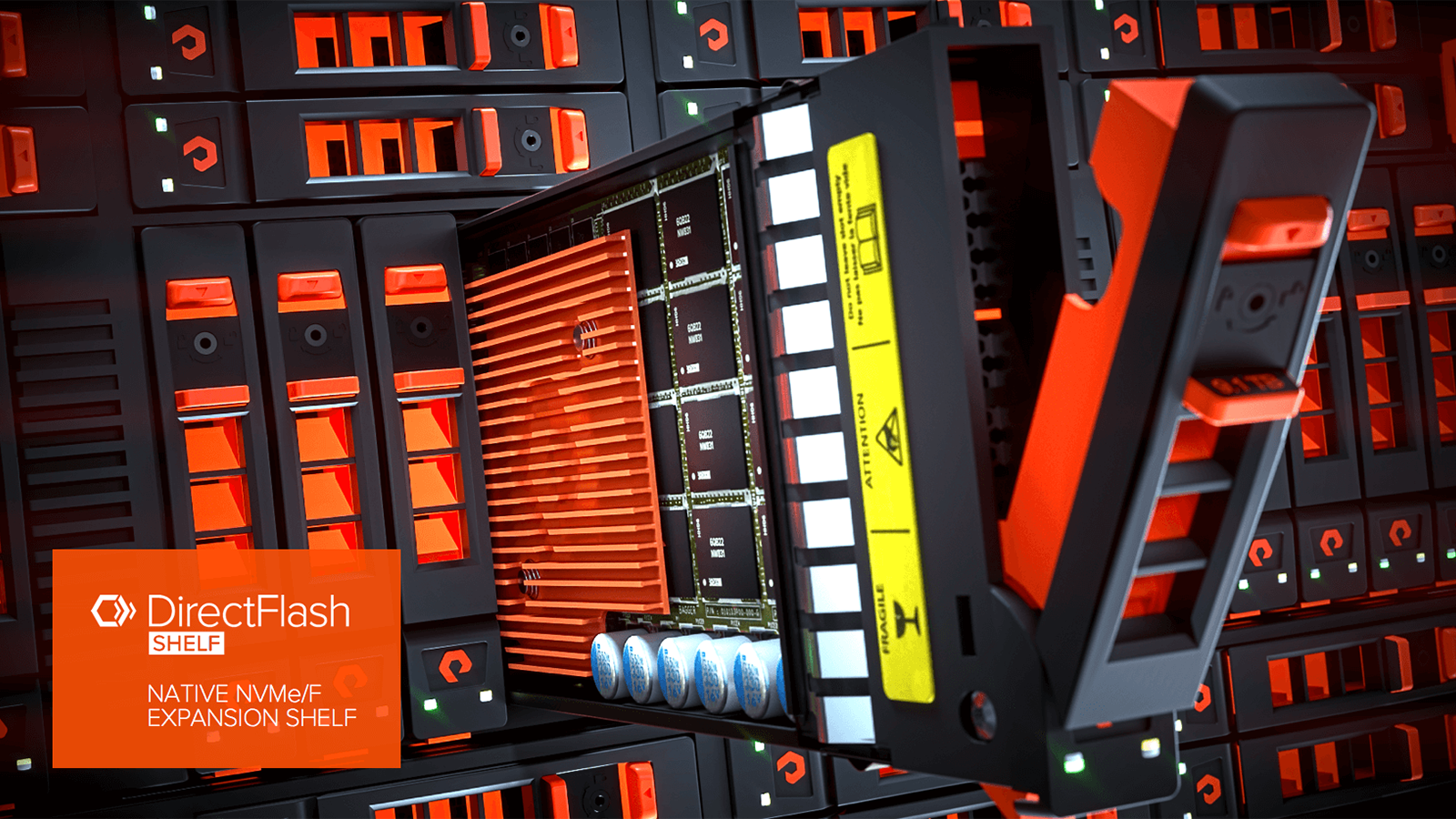
300TB SSDs Due in 2026, Supplier Claims
Pure Storage, a supplier of all-flash storage devices, expects capacity of its proprietary direct flash module (DFM) solid-state drives to increase by six times in a few years, leading to 300TB capacities. The company expects advancements of 3D NAND areal density driven by increased number of layers and other factors to enable such a dramatic capacity increase. SSDs for client PCs are also expected to gain capacity in the coming years, but not as dramatically.
“The plan for us over the next couple of years is to take our hard drive competitive posture into a whole new space,” said Alex McMullan, CTO of Pure Storage, in an interview with Blocks & Files. “Today we are shipping 24TB and 48TB [DFM] drives. You can expect […] a number of announcements from us at our Accelerate conference around larger and larger drive sizes with our stated ambition here to have 300TB drive capabilities, by or before 2026.”
Pure Storage’s proprietary DirectFlash Module (DFM) drives are used exclusively with the company’s FlashArray and FlashBlade storage systems. DFMs resemble ruler form-factor SSDs and even use standard U.2 NVMe connectivity, but they are designed solely for particular machines. The modules use enterprise-grade SSD controllers albeit with fully custom firmware as well as 3D TLC or 3D QLC NAND memory devices though it is unclear whether the company uses any custom packaging to increase capacity of its flash chips.

There are several ways how to increase capacity of Pure’s DFM by six times in three years, but it is not going to be easy. The most obvious way is to use more sophisticated 3D NAND ICs. Nowadays the company uses 3D NAND devices with 112 to 160 layers, whereas in the next five years the number of active layers is set to increase to 400 to 500, Pure says, which will increase capacity of 3D NAND ICs.
“All the fab vendors have a plan and a path to get to 400-500 layers over the next five years,” said McMullan. “And the whole point of that will help us of course, on its own.”
3D NAND makers introduce new generations of their devices (i.e., increase the number of active layers) roughly every two years. This year manufacturers are set to ramp production of ~200-layer 3D NAND, so expect ~300-layer 3D NAND in 2025 and ~400-layer 3D NAND in 2027. To increase capacity of DFMs radically by 2026 or earlier, Pure Storage will have to rely not only in increased number of active layers, but on other things too.
Existing DFMs can house a limited number of 3D NAND packages. Therefore, Pure Storage can either use packages that pack more 3D NAND devices (which will require controllers that can work with such packages), or increase the number of packages and adopt a larger footprint for DFMs.
Perhaps Pure Storage’s plans to increase capacity of its DFM drives by six times in three years looks ambitious. Meanwhile, 3D NAND flash as well as memory packaging technologies are developing rapidly and we are not going to be surprised if Pure’s DFM-based storage systems will exceed storage density offered by storage systems that use HAMR hard drives in a few years.


